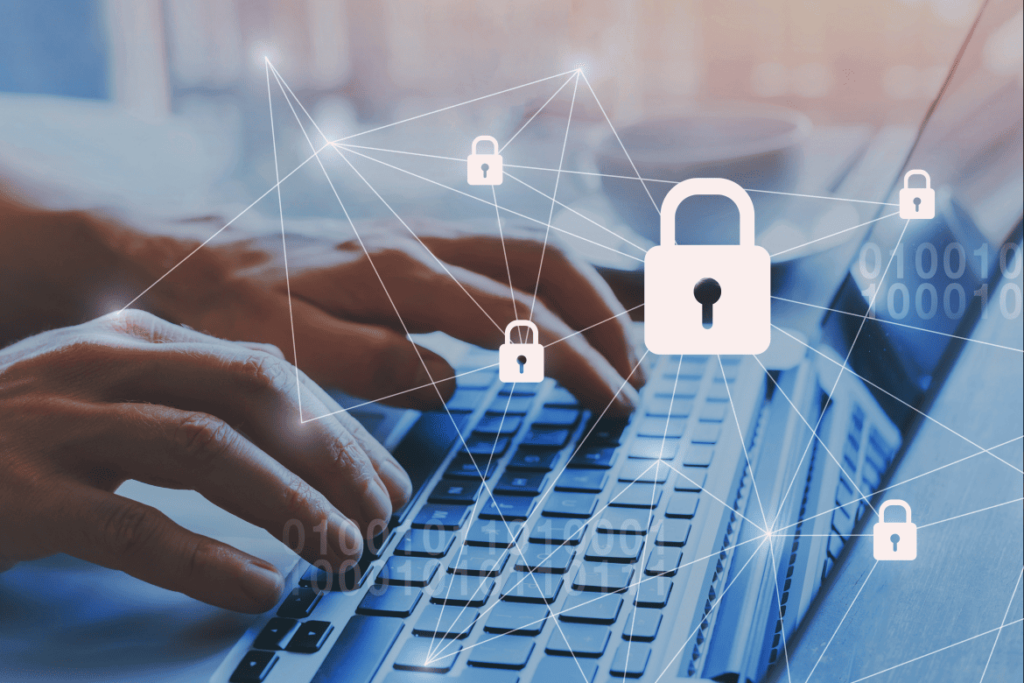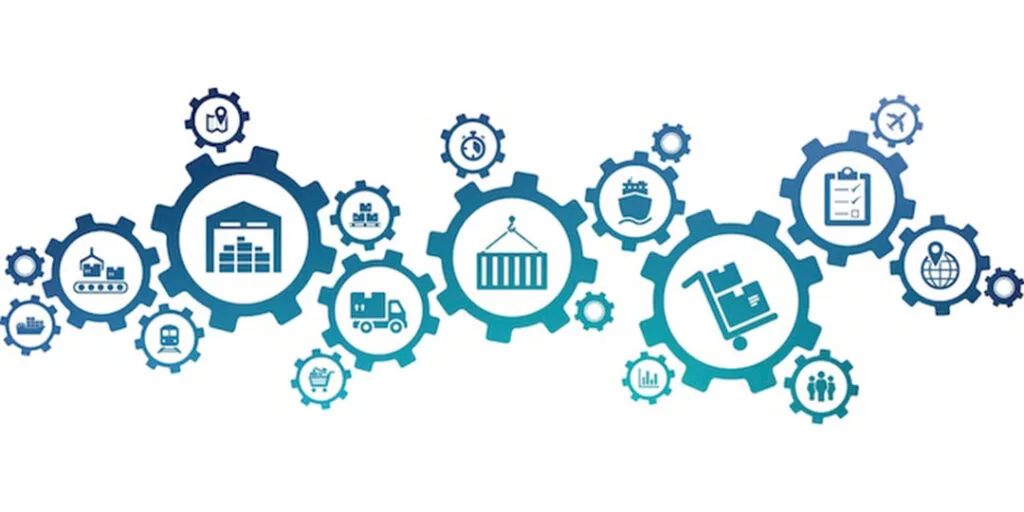Table of Contents
What is Blockchain in the Supply Chain?
Blockchain technology has become a revolutionary force across various industries, and blockchain in supply chain management is no exception. This technology provides a decentralized and immutable ledger that can record transactions securely and transparently. In the context of supply chain management, blockchain can track products from their origin to the end consumer, ensuring that every step of the process is verifiable and tamper-proof.
Benefits of Using Blockchain in Supply Chain
The adoption of blockchain in supply chain management offers numerous advantages that can streamline operations and enhance efficiency. Here are some key benefits:
1. Enhanced Traceability and Transparency
Blockchain provides a transparent and traceable record of transactions. Every participant in the supply chain can see the history of a product, from its origin to its current state, which helps in verifying authenticity and preventing fraud. This transparency is crucial in industries like pharmaceuticals and food, where product authenticity and quality are paramount.
According to a report by MarketsandMarkets, the global blockchain supply chain market is expected to grow from USD 253 million in 2020 to USD 3,272 million by 2026, at a CAGR of 53.2%. This growth is driven by the increasing need for transparency and traceability in supply chain operations.
2. Improved Efficiency
Traditional supply chain management involves numerous intermediaries and paper-based processes, which can be slow and error-prone. Blockchain supply chain technology automates many of these processes, reducing delays and increasing accuracy. Smart contracts, which are self-executing contracts with the terms of the agreement directly written into code, play a significant role in this automation.
Gartner estimates that by 2023, blockchain will support the global movement and tracking of $2 trillion of goods and services annually.
3. Cost Reduction
By eliminating intermediaries and reducing the need for manual record-keeping, blockchain in supply chain can significantly cut operational costs. The streamlined processes and reduced need for third-party verification translate to cost savings across the supply chain.
Capgemini estimates that using blockchain will save up to $31 billion in food fraud by 2024. This significant reduction in fraud translates to substantial cost savings for the food industry.
4. Increased Security
The decentralized nature of blockchain means that data is not stored in a single location but across multiple nodes. This makes it highly resistant to hacking and fraud. Each transaction is encrypted and linked to the previous one, creating a chain that is nearly impossible to alter without consensus from the entire network.
A study by Deloitte highlights that blockchain can significantly reduce the risk of unethical sourcing, shipping delays, and ineffective distribution by providing an immutable and transparent record of all transactions.
5. Enhanced Collaboration
Blockchain supply chain fosters better collaboration among supply chain partners by providing a shared, single source of truth. This leads to improved communication and coordination, as all parties have access to the same data and can make informed decisions based on real-time information.
According to Accenture, 88% of supply chain companies want blockchain to gain a competitive advantage, underscoring the technology’s potential to enhance collaboration and operational efficiency.
Limitations of Blockchain in Supply Chain Management

While blockchain supply chain technology offers numerous benefits, it also has certain limitations. Understanding these limitations is crucial for organizations considering the implementation of blockchain in their supply chain operations.
1. Scalability Issues:
As the number of transactions grows, the blockchain can become slower and more resource-intensive. This can be a significant challenge for large supply chains with high transaction volumes. The decentralized nature of blockchain means that every node in the network must process and validate each transaction, which can lead to delays and increased computational load.
According to a Deloitte report, the scalability of blockchain remains a critical challenge, with many blockchain networks struggling to process transactions at the speed required for large-scale operations.
Impact: In a large supply chain, the volume of transactions can be immense, and if the blockchain network cannot handle this volume efficiently, it can lead to bottlenecks and reduced overall efficiency. This limitation can be particularly problematic for industries that require real-time processing and rapid transaction verification.
2. Integration with Existing Systems
Integrating blockchain with existing supply chain management systems can be complex and costly. Companies may need to overhaul their current systems to fully leverage blockchain technology. The integration process involves ensuring compatibility between the blockchain platform and the company’s existing IT infrastructure, which can be a daunting and resource-intensive task.
A report by MarketsandMarkets highlights that the integration complexity is a significant barrier to the widespread adoption of blockchain in supply chains.
Impact: The cost and complexity of integration can be a deterrent, especially for small and medium-sized enterprises (SMEs) that may not have the resources to undertake such a significant transformation. This can limit the adoption of blockchain technology to larger organizations with more substantial IT budgets.
3. Regulatory and Compliance Challenges
Blockchain operates across different jurisdictions, which can lead to regulatory and compliance issues. Ensuring that blockchain solutions comply with various laws and regulations can be challenging. Different countries have different regulations regarding data privacy, security, and financial transactions, and navigating these regulations can be complex.
According to Deloitte, 55% of industries have not yet established governance for data privacy and ownership in distributed ledger systems, underscoring the regulatory challenges in blockchain adoption.
Impact: Regulatory uncertainty can hinder the adoption of blockchain technology. Companies must ensure that their blockchain implementations comply with all relevant regulations to avoid legal issues. This often requires working with legal experts and may involve additional costs and time.
4. Initial Setup Costs
Implementing blockchain technology requires a significant initial investment. The costs associated with setting up a blockchain network, including hardware, software, and training, can be prohibitive for many organizations.
Capgemini’s research indicates that the initial setup costs for blockchain can be a major barrier to adoption, particularly for SMEs.
Impact: High initial costs can deter organizations from adopting blockchain technology, particularly smaller companies with limited budgets. While blockchain can offer long-term cost savings and efficiency gains, the upfront investment can be a significant hurdle to overcome.
Common Applications of Blockchain in Supply Chain
Blockchain has numerous applications in supply chain management, each addressing different challenges and enhancing overall efficiency. Here are some common applications:
Traceability and Transparency
One of the most significant advantages of blockchain in supply chain is its ability to provide traceability and transparency. By recording every transaction on an immutable ledger, blockchain ensures that all participants can trace the history of a product. This is particularly important in industries like pharmaceuticals and food, where the authenticity and origin of products are crucial.
Reducing Counterfeits
Counterfeit products are a major issue in many industries, leading to significant financial losses and safety concerns. Blockchain tracking supply chain helps combat counterfeiting by providing a tamper-proof record of a product’s journey through the supply chain. This makes it easy to verify the authenticity of products and detect any discrepancies.
Addressing Food Safety Issues
Food safety is a critical concern for both consumers and regulators. Blockchain can enhance food safety by providing detailed information about the origin and handling of food products. In case of a foodborne illness outbreak, blockchain enables quick identification of the source, reducing the impact and facilitating efficient recalls.
Ensuring Sustainable Sourcing
Sustainability has become a key focus for many companies, and blockchain in supply chain can support sustainable sourcing practices. By providing a transparent record of a product’s journey, blockchain allows companies to verify that their suppliers adhere to environmental and ethical standards.
Supporting Efficient Payments
Traditional payment processes in supply chains can be slow and cumbersome, involving multiple intermediaries. Blockchain streamlines payment processes by enabling direct, secure transactions between parties. This reduces delays and transaction costs, leading to more efficient supply chain operations.
Some Considerations When Implementing Blockchain in Supply Chain

1. Choosing the Right Blockchain Platform
There are various blockchain platforms available, each with its own features and capabilities. It’s essential to choose a platform that aligns with your specific supply chain needs and goals.
- Example Platforms: Popular blockchain platforms include Ethereum, Hyperledger Fabric, and Corda. Ethereum is known for its smart contract functionality, while Hyperledger Fabric is tailored for enterprise solutions with permissioned networks, and Corda focuses on financial services and interoperability between different blockchain networks.
- Considerations: Evaluate the scalability, security, transaction speed, and support ecosystem of each platform. Ensure that the chosen platform can handle the complexity and volume of transactions in your supply chain.
2. Data Privacy and Security
While blockchain is inherently secure, it’s important to ensure that sensitive data is protected. Implementing robust encryption and access control measures is crucial.
- Security Measures: Use advanced encryption standards to protect data. Implement multi-factor authentication and access controls to restrict data access to authorized personnel only.
- Compliance: Ensure compliance with data protection regulations such as GDPR in Europe and CCPA in California. This involves securing personal and sensitive data from unauthorized access and ensuring data privacy rights are upheld.
3. Collaboration with Stakeholders
Successful implementation of blockchain requires collaboration with all stakeholders, including suppliers, manufacturers, and customers. Building trust and ensuring that all parties are on board is essential.
- Stakeholder Engagement: Engage stakeholders early in the process to understand their concerns and requirements. Regular communication and transparency are key to gaining their trust and cooperation.
- Training and Support: Provide training and support to stakeholders to help them understand and use the blockchain system effectively. This can include workshops, tutorials, and ongoing support.
4. Regulatory Compliance
Ensure that your blockchain solution complies with relevant regulations and standards. This may involve working with legal experts to navigate the complex regulatory landscape.
- Regulatory Landscape: Different countries and regions have varying regulations regarding blockchain and data management. Work with legal experts to ensure compliance with these regulations.
- Standards: Adhere to industry standards such as the International Organization for Standardization (ISO) for blockchain technology and data security. This ensures that your solution is recognized and trusted globally.
5. Scalability and Performance
Consider the scalability and performance of your blockchain solution. It’s important to ensure that the system can handle the anticipated transaction volume and grow with your business.
- Performance Testing: Conduct rigorous testing to assess the performance of your blockchain system under different loads. This helps identify potential bottlenecks and areas for improvement.
- Scalability Solutions: Explore solutions such as sharding, off-chain transactions, and layer 2 protocols to enhance scalability. These techniques can help distribute the load and improve transaction speeds.
6. Cost-Benefit Analysis
Conduct a thorough cost-benefit analysis to determine whether the investment in blockchain technology is justified. Consider both the initial setup costs and the long-term benefits.
- Initial Costs: Include costs for hardware, software, integration, training, and support. Evaluate whether these costs are within your budget and justify the investment.
- Long-term Benefits: Assess the potential long-term benefits such as cost savings, improved efficiency, reduced fraud, and enhanced transparency. Quantify these benefits to understand the return on investment (ROI).
- Case Studies: Refer to case studies and industry reports to understand how other companies have benefited from implementing blockchain in their supply chains. This provides insights into potential benefits and challenges.
Conclusion
Blockchain in supply chain management offers a transformative solution that can enhance transparency, efficiency, and security. By leveraging blockchain technology, companies can address common supply chain challenges, such as counterfeiting, inefficiencies, and food safety issues.
However, it’s important to be aware of the limitations and carefully consider the factors involved in implementing blockchain solutions. With the right approach, blockchain can revolutionize supply chain management and provide a competitive edge in today’s dynamic market.
By adopting blockchain development services, companies can create a more resilient, transparent, and efficient supply chain that meets the demands of the modern life.